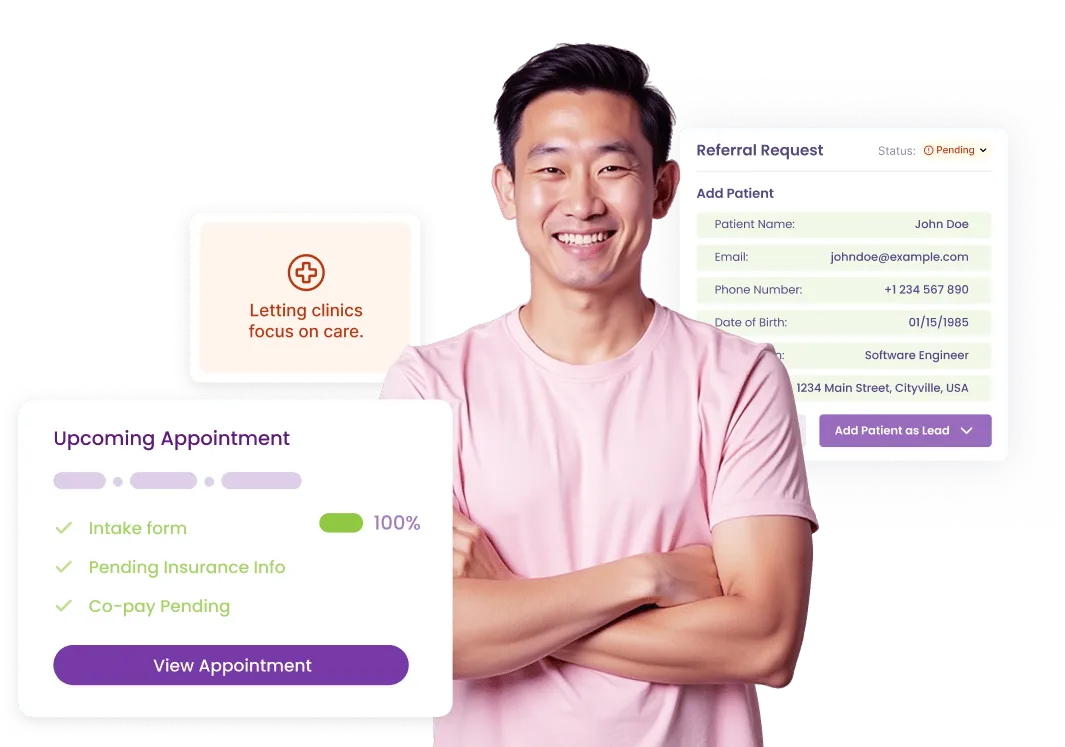99494 – Care Management / Collaborative Care Service
CPT code 99494 represents a distinct mental or behavioral health service, including evaluation, therapy, or care coordination.
What is CPT
99494
?
99494 is a CPT code used in collaborative care for care management services, specifically focusing on the follow-up and ongoing management of patients with mental health conditions. This code is essential for providers who engage in systematic care coordination efforts, ensuring that patients receive appropriate interventions tailored to their needs. Documentation is critical when utilizing this code; it must reflect evidence-based practices, treatment objectives, and the specific interventions employed. Providers are encouraged to maintain detailed records of patient progress, including the start and stop times of the billed service to substantiate the duration of care provided. Such thorough documentation not only supports billing but also enhances the quality of care delivered.

Documentation Tips
Accurate documentation is a cornerstone of effective billing for CPT code 99494. When submitting claims based on time spent in psychotherapy, it is vital to record the start and stop times of each session clearly. Additionally, include details about the therapeutic modality used, the specific assessment instruments administered, the clinical focus of the session, and the patient's response to treatment. For example, if a clinician uses a standardized assessment tool like the PHQ-9 to evaluate depression, they should document the scores achieved, the rationale for using this instrument, and the follow-up plan based on the results. For telehealth services, ensure that consent is obtained and documented, along with specifics regarding the technology platform utilized. Consistency in using frameworks such as SOAP (Subjective, Objective, Assessment, Plan) or DAP (Data, Assessment, Plan) can significantly enhance audit readiness and clarity.

At a Glance
- Service Type: Care Management Services
- Use Case: Collaborative Care for Mental Health
- Typical Setting: Outpatient clinic, telehealth (subject to payer policy)
- Billing Unit: Per session or per instrument (depends on specific code definitions)
- Common Pairings: 90791 (Psychiatric Diagnostic Evaluation), 96127 (Brief Emotional/Behavioral Assessment), various psychotherapy codes
Billing Examples
When utilizing code 99494, clinical interactions should consistently connect assessment findings to treatment planning and measurable goals. For instance, a clinician might document that a patient presenting with anxiety symptoms showed a reduction in distress levels after implementing cognitive behavioral strategies, detailing both the specific techniques used and the patient's feedback. This kind of documentation not only illustrates clinical necessity but also serves as a foundation for future treatment adjustments. Regularly updating care plans based on measurable outcomes ensures that documentation reflects ongoing assessments aligned with the patient's evolving needs.
Compliance Guidelines
- Always verify payer coverage and authorization requirements before proceeding with billing for code 99494. Different payers may have specific criteria for coverage.
- Document medical necessity clearly, ensuring that services provided are linked to appropriate ICD-10 diagnoses. This linkage is essential for justifying the billed service.
- Utilize correct modifiers where necessary (e.g., modifier 95 for telehealth services) to comply with payer requirements and facilitate proper reimbursement.
- Avoid upcoding by selecting the code that accurately reflects the documented time and level of service provided. Accurate coding is crucial for ethical billing practices.
- Conduct regular audits of billing practices and documentation quality to identify areas for improvement, reduce denial rates, and ensure compliance with evolving regulations.
Common ICD-10 Codes
Helpful links for mental health billing and documentation
- F32.1 (Major Depressive Disorder, Single Episode, Moderate)
- F33.9 (Major Depressive Disorder, Recurrent, Unspecified)
- Z63.5 (Disruption of Family by Separation or Divorce)
- F41.9 (Anxiety Disorder, Unspecified)
Additional Resources
Helpful links for mental health billing and documentation
Related CPT Codes
Helpful links for mental health billing and documentation
Got questions? We’ve got answers.
Need more help? Reach out to us.
Q1: What is the primary purpose of CPT code 99494?
A: Code 99494 is intended for billing collaborative care management services involving ongoing patient monitoring and treatment adjustments in mental health contexts. Ensure that your documentation aligns with the specifics of the service rendered.
Q2: Is it permissible to bill this code for telehealth sessions?
A: Yes, many payers allow billing for telehealth services as long as they are synchronous and the appropriate modifiers and patient consent are documented. Always check the specific payer policy before billing.
Q3: What type of documentation do payers typically request for this code?
A: Payers may require documentation that includes time spent on the service, the therapeutic techniques or assessment instruments utilized, patient responses, and a clear connection to an ICD-10 diagnosis that supports the medical necessity of the service.
Q4: Can code 99494 be billed alongside other services?
A: When billing multiple services, it's essential to document the distinct time and rationale for each service provided. Utilize add-on codes or E/M separation rules as applicable to avoid billing conflicts.
Q5: What are common reasons for denial related to this code?
A: Frequent denial reasons can include missing or insufficient time records, lack of documented medical necessity, incorrect use of modifiers, or billing beyond frequency limits set by payers.

